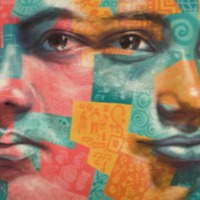
Deborah
There is an estimated 48,000 people living in modern slavery in Libya (GSI 2018). Libya is a major transit destination for migrants and refugees hoping to reach Europe by sea. Human trafficking networks have prospered amid lawlessness, created by the warring militias that have been fighting for control of territories since the toppling of Muammar Gaddafi in 2011. Highly organized trafficking and migrants smuggling networks that reach into Libya from Niger, Nigeria, Chad, Eritrea, Ethiopia, Somalia, Sudan, and other sub-Saharan states subject migrants to forced labor and forced prostitution through fraudulent recruitment, confiscation of identity and travel documents, withholding or non-payment of wages, debt bondage, and verbal, physical, and sexual abuse. In some cases, migrants reportedly pay smuggling fees to reach Tripoli, but once they cross the Libyan border they are sometimes abandoned in southern cities or the desert where they are susceptible to severe forms of abuse and human trafficking. Deborah left her home in Nigeria because her stepmother treated her badly. She wanted to become a fashion designer and when she met a man who promised to take her to Europe, she gladly accepted. It was a big surprise to her when after arriving in Libya, she was told that the journey stopped there, and she had to start working as a prostitute.
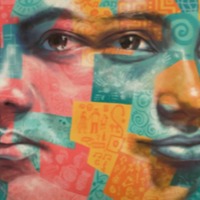
Abraham
There is an estimated 48,000 people living in modern slavery in Libya (GSI 2018). Libya is a major transit destination for migrants and refugees hoping to reach Europe by sea. Human trafficking networks have prospered amid lawlessness, created by the warring militias that have been fighting for control of territories since the toppling of Muammar Gaddafi in 2011. Highly organized trafficking and migrants smuggling networks that reach into Libya from Niger, Nigeria, Chad, Eritrea, Ethiopia, Somalia, Sudan, and other sub-Saharan states subject migrants to forced labor and forced prostitution through fraudulent recruitment, confiscation of identity and travel documents, withholding or non-payment of wages, debt bondage, and verbal, physical, and sexual abuse. In some cases, migrants reportedly pay smuggling fees to reach Tripoli, but once they cross the Libyan border they are sometimes abandoned in southern cities or the desert where they are susceptible to severe forms of abuse and human trafficking. Abraham chose to travel from Eritrea to Europe through smugglers, however he found himself trafficked by brokers and being locked inside a warehouse and held for ransom for over a year. After being released from the trafficker’s camp, he and two friends, Kidane, and Berhane, decided to cross the sea together. They were put out to sea in an old wooden boat that was leaking. They were three days at sea, with no food and no water to drink. Some of the passengers died. Today, the three friends are earnestly advising other people not to go on this dangerous journey. They say enough is enough, irregular travel through Libya should stop now.
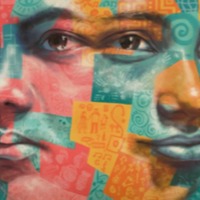
Kidane
There is an estimated 48,000 people living in modern slavery in Libya (GSI 2018). Libya is a major transit destination for migrants and refugees hoping to reach Europe by sea. Human trafficking networks have prospered amid lawlessness, created by the warring militias that have been fighting for control of territories since the toppling of Muammar Gaddafi in 2011. Highly organized trafficking and migrants smuggling networks that reach into Libya from Niger, Nigeria, Chad, Eritrea, Ethiopia, Somalia, Sudan, and other sub-Saharan states subject migrants to forced labor and forced prostitution through fraudulent recruitment, confiscation of identity and travel documents, withholding or non-payment of wages, debt bondage, and verbal, physical, and sexual abuse. In some cases, migrants reportedly pay smuggling fees to reach Tripoli, but once they cross the Libyan border they are sometimes abandoned in southern cities or the desert where they are susceptible to severe forms of abuse and human trafficking. Kidane traveled from Eritrea to Europe through smugglers, however he found himself trafficked by brokers and being locked inside a warehouse for two years. After being released from the trafficker’s camp, he and two friends, Abraham and Berhane, decided to cross the sea together. They were put out to sea in an old wooden boat that was leaking. They were three days at sea, with no food and no water to drink. Some of the passengers died. Today, the three friends are earnestly advising other people not to go on this dangerous journey. They say enough is enough, irregular travel through Libya should stop now.
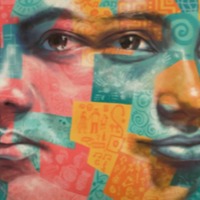
Berhane
There is an estimated 48,000 people living in modern slavery in Libya (GSI 2018). Libya is a major transit destination for migrants and refugees hoping to reach Europe by sea. Human trafficking networks have prospered amid lawlessness, created by the warring militias that have been fighting for control of territories since the toppling of Muammar Gaddafi in 2011. Highly organized trafficking and migrants smuggling networks that reach into Libya from Niger, Nigeria, Chad, Eritrea, Ethiopia, Somalia, Sudan, and other sub-Saharan states subject migrants to forced labor and forced prostitution through fraudulent recruitment, confiscation of identity and travel documents, withholding or non-payment of wages, debt bondage, and verbal, physical, and sexual abuse. In some cases, migrants reportedly pay smuggling fees to reach Tripoli, but once they cross the Libyan border they are sometimes abandoned in southern cities or the desert where they are susceptible to severe forms of abuse and human trafficking. Berhane chose to travel from Eritrea to Europe through smugglers, however he found himself trafficked by brokers and being locked inside for a year. After being released from the trafficker’s camp, he and two friends, Abraham and Kidane, decided to cross the sea together. They were put out to sea in an old wooden boat that was leaking. They were three days at sea, with no food and no water to drink. Some of the passengers died. Today, the three friends are earnestly advising other people not to go on this dangerous journey. They say enough is enough, irregular travel through Libya should stop now. Berhane’s narrative is part of a conversation with two other Eritrean men in a refugee reception centre in Malta, discussing their experience of taking the Libya route to Europe.
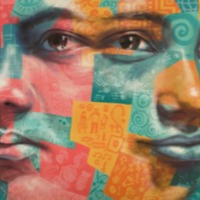
Andemariam
There is an estimated 48,000 people living in modern slavery in Libya (GSI 2018). Libya is a major transit destination for migrants and refugees hoping to reach Europe by sea. Human trafficking networks have prospered amid lawlessness, created by the warring militias that have been fighting for control of territories since the toppling of Muammar Gaddafi in 2011. Highly organized trafficking and migrants smuggling networks that reach into Libya from Niger, Nigeria, Chad, Eritrea, Ethiopia, Somalia, Sudan, and other sub-Saharan states subject migrants to forced labor and forced prostitution through fraudulent recruitment, confiscation of identity and travel documents, withholding or non-payment of wages, debt bondage, and verbal, physical, and sexual abuse. In some cases, migrants reportedly pay smuggling fees to reach Tripoli, but once they cross the Libyan border they are sometimes abandoned in southern cities or the desert where they are susceptible to severe forms of abuse and human trafficking. Andemariam, an Eritrean man, had been living and working in Sudan for over a decade when he was duped into taking the journey to Libya, where he’d been told there would be better employment opportunities. Andemariam and his friend were handed over to Libyan smugglers who imprisoned them in a store for two months before embarking on a difficult sea journey. Upon arrival in Italy, Andemariam had lost all his belongings, was sick, and was unable to find work. He later traveled to Germany to seek. medical attention At the time of the interview (2015) he was still waiting to hear about his refugee status.
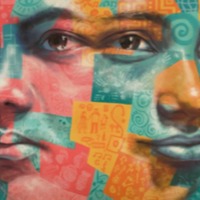
Abdirahman Hashi
There is an estimated 48,000 people living in modern slavery in Libya (GSI 2018). Libya is a major transit destination for migrants and refugees hoping to reach Europe by sea. Human trafficking networks have prospered amid lawlessness, created by the warring militias that have been fighting for control of territories since the toppling of Muammar Gaddafi in 2011. Highly organized trafficking and migrants smuggling networks that reach into Libya from Niger, Nigeria, Chad, Eritrea, Ethiopia, Somalia, Sudan, and other sub-Saharan states subject migrants to forced labor and forced prostitution through fraudulent recruitment, confiscation of identity and travel documents, withholding or non-payment of wages, debt bondage, and verbal, physical, and sexual abuse. In some cases, migrants reportedly pay smuggling fees to reach Tripoli, but once they cross the Libyan border they are sometimes abandoned in southern cities or the desert where they are susceptible to severe forms of abuse and human trafficking. Abdirahman was training to become a photographer in his hometown Hargeisa, Somalia when he started receiving pictures and messages from friends who had travelled irregularly to Europe. They were bragging about how life in Europe was wonderful and easy and Abdirahman felt an urge to go there himself. He and some friends decided to try their luck and contacted a smuggler. They had been promised the journey would be fast and easy. Already the first leg, across the sea to Yemen and from there to Sudan, brought a sharp reality check. Many fellow passengers died on the overloaded boat which had a capacity of 50 passengers but had 200 on board. On the second sea journey to Sudan the ship got lost and they ran out of food. When they finally reached the Sudanese shore, they were handed over to ruthless smugglers. They were put on buses and started a long drive through a hot desert with no food and only water mixed with petrol to drink, to prevent them feeling hungry. In Libya, their party was attacked by bandits, and they were taken to a traffickers’ camp where they were brutally beaten to force their families to pay ransom. When the ransom money had been paid, the camp was attacked by a rival gang and Abdirahman was kidnapped once again. At last, he managed to flee his tormentors and was rescued by police. He was put into detention and eventually offered repatriation, which he gratefully accepted.
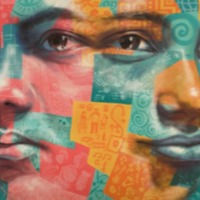
Miracle
There are an estimated 10,000 people living in modern slavery in Lebanon (GSI 2018). Men, women, and children among the estimated 1.3 million Syrian refugees in Lebanon are at high risk of sex trafficking and forced labour. There are some restrictions on Syrians’ ability to work legally in Lebanon and the enforcement of visas and residence permit laws increase this population’s vulnerability to trafficking. Syrians are commonly involved in the exploitation of other Syrians in Lebanon, particularly targeting refugees fleeing the conflict. Syrian children are reportedly vulnerable to forced early marriages—which can lead to commercial sexual exploitation and forced labour—and children displaced within the country continue to be subjected to forced labour, particularly by organized begging rings. Miracle left Nigeria after meeting someone who promised to help her find a job in Europe. On the way she found out she was pregnant and her smuggler attempted to force her to abort the pregnancy. When she arrived in Libya, Miracle and the other girls were locked up and sold to a Madam to be forced into prostitution. However, because Miracle was pregnant, she could not be sold. She spent two months locked inside a room before being taken to boat to cross over to Europe. When she arrived in Europe, she found that she had been deceived by promises of work.
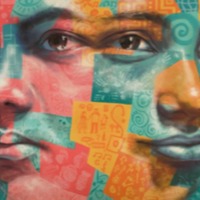
Nora
There are an estimated 145,000 people liing in conditions of modern slavery in Italy (GSI 2018). Italy is a destination, transit, and source country for women, children, and men subjected to sex trafficking and forced labour. Victims originate from Nigeria, Romania, Morocco, China, and other countries. Female victims are often subjected to sex trafficking in Italy after accepting promises of employment as dancers, singers, models, restaurant servers, or caregivers. Romanian and Albanian criminal groups force Eastern European women and girls into commercial sex. Nora’s family was poor and constantly worrying how to make ends meet. One day she met a woman who told her she could arrange a job for her abroad in Europe. Nora thought this was an opportunity to support her family and agreed. Before leaving Nigeria, she and others were required to go through a voodoo ceremony and swear an oath to pay back the woman for travel costs. The route went through Niger and Libya, as soon as they left Nigeria, the woman’s attitude changed. Nora and the other women she travelled with were trafficked into prostitution and forced to work in brothels along their journey in Niger, Libya, and Italy.
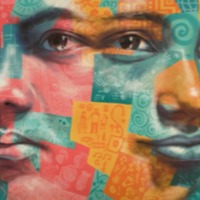
Seif
There is an estimated 48,000 people living in modern slavery in Libya (GSI 2018). Libya is a major transit destination for migrants and refugees hoping to reach Europe by sea. Human trafficking networks have prospered amid lawlessness, created by the warring militias that have been fighting for control of territories since the toppling of Muammar Gaddafi in 2011. Highly organized trafficking and migrants smuggling networks that reach into Libya from Niger, Nigeria, Chad, Eritrea, Ethiopia, Somalia, Sudan, and other sub-Saharan states subject migrants to forced labor and forced prostitution through fraudulent recruitment, confiscation of identity and travel documents, withholding or non-payment of wages, debt bondage, and verbal, physical, and sexual abuse. In some cases, migrants reportedly pay smuggling fees to reach Tripoli, but once they cross the Libyan border they are sometimes abandoned in southern cities or the desert where they are susceptible to severe forms of abuse and human trafficking. Seif was a student in Sudan when he and some friends decided to travel to Europe. They arranged the journey with a smuggler and left for Libya through Chad. The desert was a tough experience, there was little to eat and drink, and when they arrived in Libya, they were exhausted. There, they were kidnapped and forced to work without pay in the goldmines close to the border.
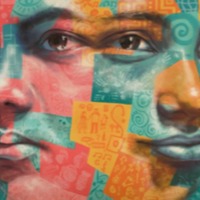
Suleiman
There is an estimated 48,000 people living in modern slavery in Libya (GSI 2018). Libya is a major transit destination for migrants and refugees hoping to reach Europe by sea. Human trafficking networks have prospered amid lawlessness, created by the warring militias that have been fighting for control of territories since the toppling of Muammar Gaddafi in 2011. Highly organized trafficking and migrants smuggling networks that reach into Libya from Niger, Nigeria, Chad, Eritrea, Ethiopia, Somalia, Sudan, and other sub-Saharan states subject migrants to forced labor and forced prostitution through fraudulent recruitment, confiscation of identity and travel documents, withholding or non-payment of wages, debt bondage, and verbal, physical, and sexual abuse. In some cases, migrants reportedly pay smuggling fees to reach Tripoli, but once they cross the Libyan border they are sometimes abandoned in southern cities or the desert where they are susceptible to severe forms of abuse and human trafficking. Suleiman travelled from Sudan to Egypt and from there was smuggled into Libya with his brother. Upon arrival they were held in a warehouse for three days before being released and going to Tobruk. Thinking they were being taken to Tripoli, they were shut inside a van with no view to the outside and arrived instead on a farm. A ransom of 15,000 Libyan dinars was demanded from each person for their release. They were stripped of their clothes, beaten, submitted to electrocutions and burnings while being weakened from hunger and thirst.
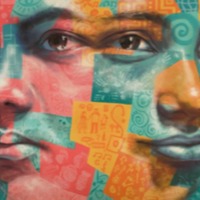
Vanessa
There is an estimated 48,000 people living in modern slavery in Libya (GSI 2018). Libya is a major transit destination for migrants and refugees hoping to reach Europe by sea. Human trafficking networks have prospered amid lawlessness, created by the warring militias that have been fighting for control of territories since the toppling of Muammar Gaddafi in 2011. Highly organized trafficking and migrants smuggling networks that reach into Libya from Niger, Nigeria, Chad, Eritrea, Ethiopia, Somalia, Sudan, and other sub-Saharan states subject migrants to forced labor and forced prostitution through fraudulent recruitment, confiscation of identity and travel documents, withholding or non-payment of wages, debt bondage, and verbal, physical, and sexual abuse. In some cases, migrants reportedly pay smuggling fees to reach Tripoli, but once they cross the Libyan border they are sometimes abandoned in southern cities or the desert where they are susceptible to severe forms of abuse and human trafficking. In Nigeria, Vanessa struggled to house and feed herself and her three children after being thrown out of their home by her abusive husband. She worked as a hawker, selling fruit, and as a hairdresser, but worried constantly about money. Then a friend mentioned a sister in Italy with a hairdressing salon and recommended Vanessa to work there. She was told it would be an easy journey through Libya, however after arriving in Tripoli, Vanessa and her fellow travellers were housed in a smuggler’s compound when a fight broke out among neighbourhood gangs. During this time, her baby developed a fever and became critically ill, dying shortly afterward. She set off from Tripoli on a smuggler’s boat headed for Italy, but the boat was captured by bandits who took them back to Libya and held the passengers for ransom. Vanessa’s friend's sister in Italy paid for her release, but she was unable to make it to Italy. When she tried for a second time, she was caught by the Libyan Coast Guard, brought back, and imprisoned. A Ghanaian man bailed her out of prison only to sell her to a brothel where she had to work as a prostitute to pay off her debt.
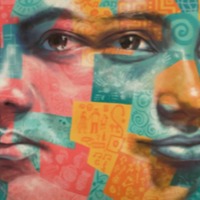
Yasmiin
There is an estimated 48,000 people living in modern slavery in Libya (GSI 2018). Libya is a major transit destination for migrants and refugees hoping to reach Europe by sea. Human trafficking networks have prospered amid lawlessness, created by the warring militias that have been fighting for control of territories since the toppling of Muammar Gaddafi in 2011. Highly organized trafficking and migrants smuggling networks that reach into Libya from Niger, Nigeria, Chad, Eritrea, Ethiopia, Somalia, Sudan, and other sub-Saharan states subject migrants to forced labor and forced prostitution through fraudulent recruitment, confiscation of identity and travel documents, withholding or non-payment of wages, debt bondage, and verbal, physical, and sexual abuse. In some cases, migrants reportedly pay smuggling fees to reach Tripoli, but once they cross the Libyan border they are sometimes abandoned in southern cities or the desert where they are susceptible to severe forms of abuse and human trafficking. Yasmiin had a small restaurant in her home town in Somalia. One day she was kidnapped by some men and raped. After that she became ostracised in her community, people stopped talking to her and stopped coming to her restaurant. She could not stay there any longer and decided to leave Somalia, taking the smuggler route through Yemen and Sudan to Libya, hoping to reach Europe. She was imprisoned in Libya and eventually evacuated by UNHCR to Niger where she is waiting for re-settlement.
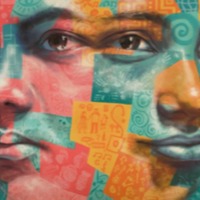
Yehia
Egypt is a source, transit and destination country for women and children trafficked for the purposes of forced labour and sexual exploitation. The local dimension of human trafficking includes child labour, the sexual exploitation of children, the sale of human organs, and various forms of prostitution. Children are forced into domestic service, street begging drug trafficking, quarrying, and agricultural work in the country. NGOs report the lack of economic and educational opportunities cause family members to subject women and girls to sex trafficking to supplement family income, and in some cases women and girls are raped to coerce or forced them into prostitution. Child sex tourism occurs in Cairo, Alexandira, and Luxor and Egyptian women and girls are purchased for 'temporary' or 'summer marriages' for the purpose of commercial sex, including sex trafficking, and forced labour. Egyptian adults are subjected to forced labour in construction, agriculture, domestic work, and low-paying service jobs in the region. Refugees from Syria, Sudan, South Sudan, and Yemen who have settled in Egypt in Egypt are also at an increased risk of trafficking, forced labour, forced marriage, and sexual exploitation. When the civil war in Yemen erupted in 2015, Yehia’s parents advised him to flee to Egypt to avoid conscription by one of the warring factions. Having arrived in Cairo via Sudan, Yehia contacted a smuggler who promised to take him across the sea to Italy. He was taken to a beach near Alexandria with other travellers and boarded a small boat, but the smugglers turned out to be gangsters who robbed the passengers and were going to put them ashore when the Coast Guard arrived and rescued them. Yehia was sent back to Sudan and tried a second time to get to Italy, but this time he was kidnapped and detained on a farm in the Egyptian desert.

Natasha
There are an estimated 136,000 people living on conditions of modern slavery in the United Kingdom (Global Slavery Index 2018). According to the 2017 annual figures provided by the National Crime Agency, 5, 145 potential victims of modern slavery were referred through the National Referral Mechanism in 2017, of whom 2,454 were female, 2688 were male and 3 were transgender, with 41% of all referrals being children at the time of exploitation. People are subjected to slavery in the UK in the form of domestic servitude, labour exploitation, organ harvesting and sexual exploitation, with the largest number of potential victims originating from Albania, China, Vietnam and Nigeria. This data however does not consider the unknown numbers of victims that are not reported. “Natasha” shares her story of being bought and sold from Romania to Italy and on to Germany and Belgium. Her final stop was Britain where she was put to work in a north London sauna. “Natasha” was finally freed from her nightmare in a police raid, a year after her abduction.
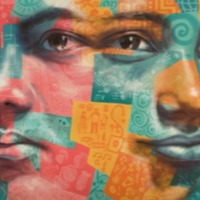
Chidi
There is an estimated 48,000 people living in modern slavery in Libya (GSI 2018). Libya is a major transit destination for migrants and refugees hoping to reach Europe by sea. Human trafficking networks have prospered amid lawlessness, created by the warring militias that have been fighting for control of territories since the toppling of Muammar Gaddafi in 2011. Highly organized trafficking and migrants smuggling networks that reach into Libya from Niger, Nigeria, Chad, Eritrea, Ethiopia, Somalia, Sudan, and other sub-Saharan states subject migrants to forced labor and forced prostitution through fraudulent recruitment, confiscation of identity and travel documents, withholding or non-payment of wages, debt bondage, and verbal, physical, and sexual abuse. In some cases, migrants reportedly pay smuggling fees to reach Tripoli, but once they cross the Libyan border they are sometimes abandoned in southern cities or the desert where they are susceptible to severe forms of abuse and human trafficking. Chidi was trafficked in Libya on his way to France. When his friend failed to pay the $3,000 fee to smugglers, he was locked up and tortured. Though his family took out loans to pay of his 'debt', he was later kidnapped and imprisoned once again. Chidi received support from Programme X including counselling, financial assistance and business skills training. He went on to set up a retail unit selling women’s accessories.
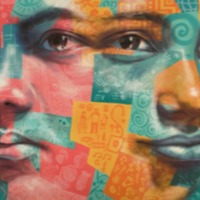
Luwam
There are an estimated 451,000 people living in modern slavery in Eritrea (GSI 2018). The small country has a unique system of compulsory, open-ended military service for citizens that makes it one of the most oppressive states in the world. The government has enforced its current policy of sending all secondary school students to serve for a minimum of twelve months since 2003. While Eritrean law puts the minimum conscription age at 18, many teenagers find themselves recruited during high school at age 16 or even younger. In rural areas, where formal education is rarer, the army will visit villages to round up young girls and boys who look roughly of age, to begin their program of combat training and forced labour. In 2007, like other adolescents in the Northeast African country of Eritrea, Luwam Estifanos was taken to Sawa, a military camp near the Sudanese border. Luwam was forced to get up 5.30am, run for two hours before sunrise, followed by 12 hours of weapons training, marching and cleaning. She recalls how girls were forced to engage in the same activities as boys however they are also subjected to sexual assault. Luwam was finally able to escape in 2010, making a 12-hour trek through the desert into Sudan. After a year in Sudan, Luwam travelled to Uganda and following one refusal and months of waiting, was eventually granted asylum in Norway with the rest of her family.
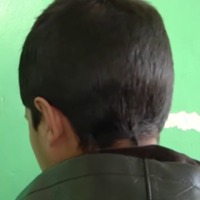
Yahya
Afghanistan is a source, transit, and destination country for men, women, and children trafficked for the purposes of forced labour and commercial sexual exploitation. Afghan boys and girls are trafficked within the country for commercial sexual exploitation, forced marriage to settle debts or disputes, forced begging, as well as forced labour or debt bondage in brick kilns, carpet-making factories, and domestic service. Afghan children are also trafficked to Iran and Pakistan for forced labuor, particularly in Pakistan’s carpet factories, and forced marriage. Moreover, both government and non-state groups use children in combat, with the Taliban forcibly recruiting and using children as suicide bombers. 11 year old Yahya was living in poverty when he was sold by his parents to smugglers in Afghanistan. He was then handed over to the Taliban and was trained as a suicide bomber. However, rather than carry out what he had been trained for, Yahya surrendered himself to Afghan security forces. He is now in the care of the Afghan state.